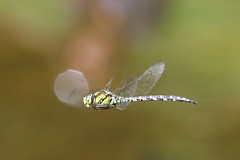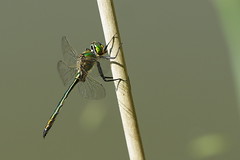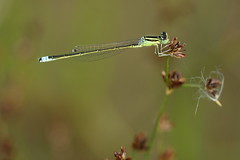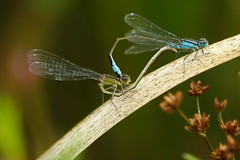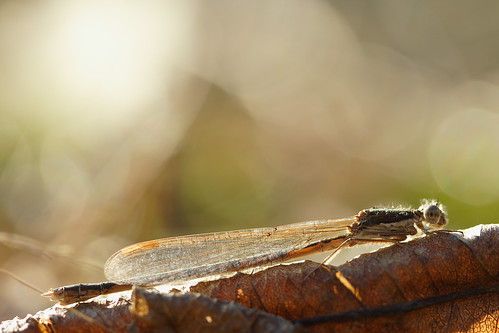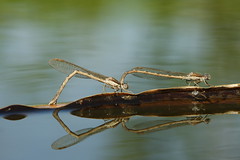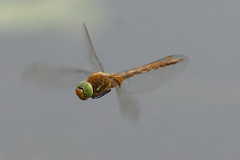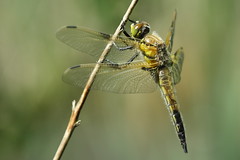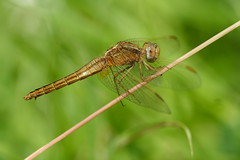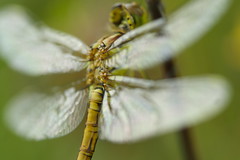
Sightings in other months are not uncommon. Last year (2007), on the Dutch site waarneming.nl sightings were reported from April 17. This year (2008) the first sighting was reported there on May 3.
But what about late sightings? Sightings in July and to a lesser extend August are not uncommon, although the number of sighted individuals declines. Personally I could report only a single imago in August this year and none in September. At the end of September somebody reported multiple individuals in an area quite close to where I have been watching dragonflies this year. Interesting information was that the number of individuals seemed to have slightly increased as compared with the previous weeks. These late Red-eyed Damselflies were not worn-out old individuals, they must have been emerged quite recently.
But even while paying extra attention to this species, "my" area looked still void of Red-eyed Damselflies. On October 11, I did some effort to get into the area of the reported sightings (it is private property and I don't want to enter that without permission). And yes, I was happy to spot one male. Although I did not succeed in taking a photo, it was exciting. But is it really that rare? Although most sites do not mention Erythromma najas as a species flying in October, British Insects (Watson, L., and Dallwitz, M.J.) says that "adults are on the wing from early May to early October.
It leaves us with some questions. It is not totally clear if this species has a one-year or two-year development cycle. Maybe it does not have a clearly defined seasonal cycle. The species is listed as a "trans-seasonal" species with an "asynchronous emergence" in some studies. I could not find a clear definition of these terms (so help me out if you can). So far I understand that although there is a clear seasonal peak, the species can get through the winter in different stages of development.
Also it seems that data from the UK show that in response to global warming, Erythromma najas is expanding its flight season in both directions: it is found both earlier and later in the season than in previous times. If global warming continues, we can probably expect more October sightings.
Links
